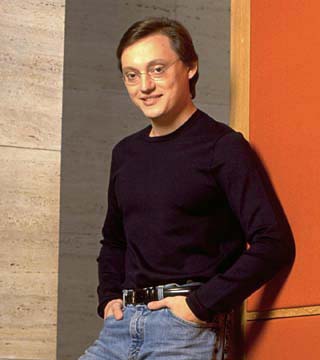
REVIEW
COURTESY OF HONOLULU SYMPHONY
Stanislav Ioudenitch captured the gold in the 11th Van Cliburn Piano Competition, the Olympics of the piano world.
Pianist tackles tough
concerto with ease
The final concert of the fall portion of the Honolulu Symphony's Masterworks Season featured a thrilling performance by the winner of the Van Cliburn Piano Competition along with Schubert's monumental "Ninth Symphony" and an interesting piece of new music.
Honolulu Symphony
Featuring Van Cliburn award winner Stanislav Ioudenitch and guest conductor Scott YooPlace: Blaisdell Concert Hall
When: 4 p.m. today
Tickets: $16, $28, $33, $44 or $59 each
Call: 792-2000 or Ticketmaster at 877-750-4400
Piano concertos are vehicles for solo display, and "Saint-Saëns Concerto No. 2" was created to display the pianistic talents of its composer. The work remains a splendid showpiece over a century later, as demonstrated by Stanislav Ioudenitch, winner of arguably the world's most prestigious piano competition.
The pianist who would play legato must be an illusionist, for the instrument cannot produce a true legato line. As soon as a key is struck, the tone begins to decay, making it impossible to achieve the sort of sustained tone that string players take for granted. As a result, the great pianists create the impression of legato line through a combination of tricks, subterfuge and sheer willpower.
Ioudenitch's performance in the first movement demonstrated that he has the rare ability to create a totally convincing legato. His sense of melodic shaping was so strong that as he moved inexorably toward the climax of the movement his face became beet red, relaxing only after the peak of the phrase.
There is something innately mesmerizing about a performer who looks as if he is about to collapse in an apoplectic stroke only to pull through with a smile on his face. His virtuosity in the final movements brought the audience to its feet.
Schubert's epic "Symphony No. 9" is a testimony to the importance of advocacy in the arts. The composer never had a public performance of one of his symphonies during his lifetime, and after his death at the age of 31, the scores gathered dust in his brother's home.
When Robert Schumann discovered this symphony over a decade after Schubert's death, the younger composer made it a mission to hear it performed, despite objections from players and conductors who believed it to be too long. The work's "heavenly length" is now recognized as its strength.
The work features the brass section extensively, and the Honolulu Symphony's "back row" performed with power, flair and admirable restraint. Schubert had a special fondness for clarinets, which highlighted the skills of James Moffitt and Norman Foster.
The concert opened with a work by Dan Coleman entitled "Focoso" (fiery), which alludes both to the fiery violin techniques of Antonio Vivaldi and the wildfires of the West. In thoroughly postmodern style, the work features snatches of Vivaldi interspersed with Romantic melodies and atmospheric effects for full orchestra.
Guest conductor Scott Yoo led the notoriously tricky Saint-Saëns concerto with precision and conducted the 50-minute Schubert symphony by memory.
E. Douglas Bomberger is a professor of music at the University of Hawaii at Manoa.
